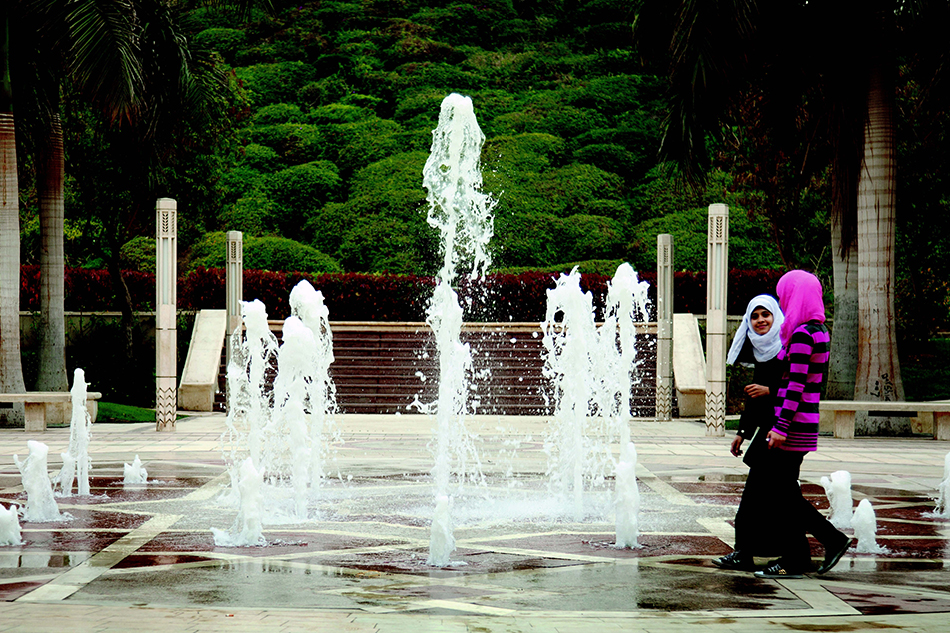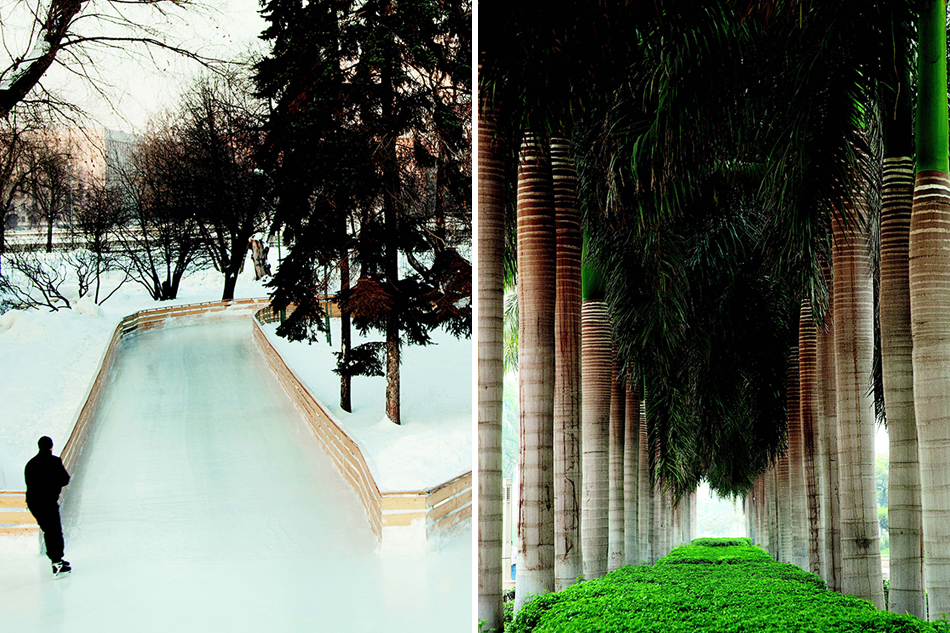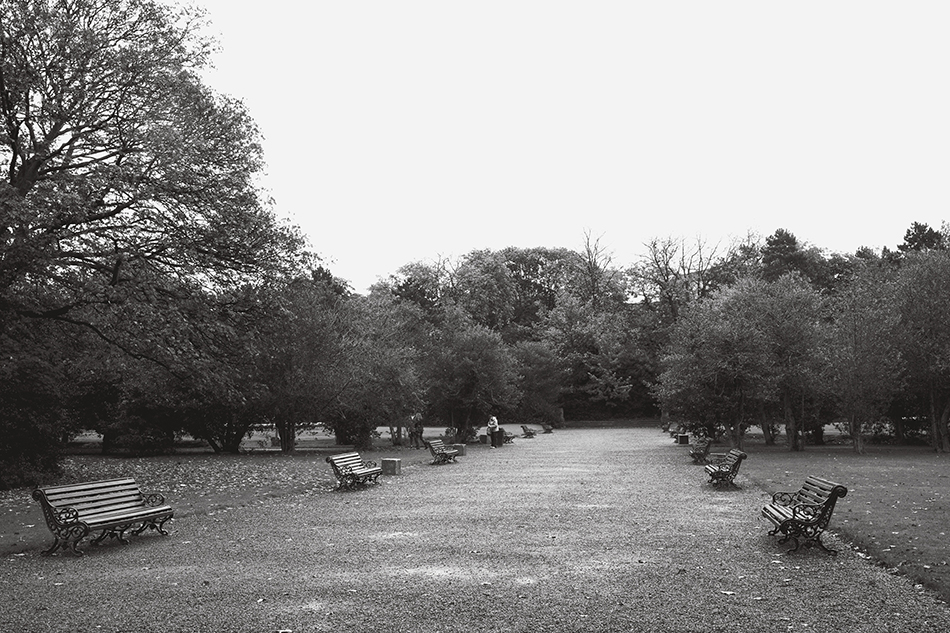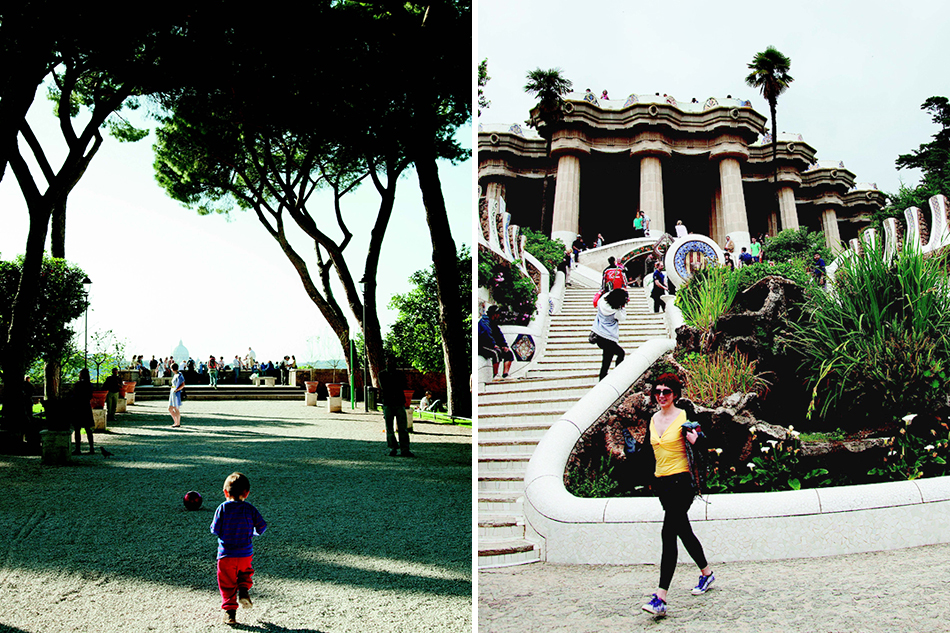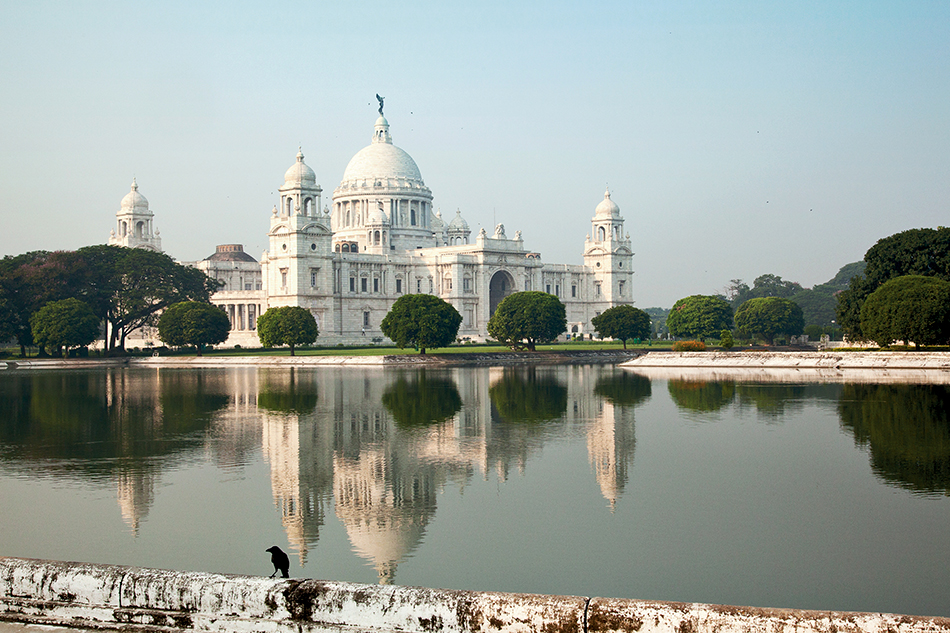
December 18, 2013At 23, Catie Marron visited the Luxembourg Gardens for the first time and fell in love: “Something about the contrast between the formal, beautiful setting and its natural, everyday humanity moved me deeply.” Top: New York’s High Line, a mile and a half of elevated train tracks transformed into a park speaks, according to writer André Aciman, one of City Park‘s essayists, of “what was then, what is now.”
Created by Marie de Médicis in the 17th century, the fabled Luxembourg Gardens, Paris’s second-largest park, have inspired such thinkers and writers as Victor Hugo, Henry James, William Faulkner and, most recently, Catie Marron. In the introduction to her new book, a collection of essays by noted authors called City Parks: Public Places, Private Thoughts (Harper), Marron writes about her first visit to the gardens, at the age of 23: “As I watched the scene before me, tears came to my eyes. Something about the contrast between the formal, beautiful setting and its natural, everyday humanity moved me deeply.”
The book is a thought-provoking manifesto about the different roles a park can play in the life of a city: Public green spaces both humanize and symbolize the soul of the metropolis, to paraphrase architect Norman Foster in his essay about Berlin’s Grosse Tiergarten. Other notable contributors include biographer Amanda Foreman (Hyde Park, London), novelist Zadie Smith (the Boboli and Villa Borghese in Florence and Rome respectively), former president Bill Clinton (Dumbarton Oaks, Washington, D.C.) and journalist Simon Winchester (the Maidan, Calcutta), all of whom Marron strategically sought out for their unique perspectives on specific places. Photographer Oberto Gili traveled to three continents to capture the perfect visual complements to the text, and then words and images were artfully arranged by creative director and book designer Mary Shanahan, who insured that City Parks is both an aesthetic and intellectual treat.

In the northern Italian city of Trieste, a small park — called Giardino Pubblico Muzio de Tommasini — offers stone ping-pong tables for pick-up games amid the trees. “This garden is civilized, cultivated and pleased with itself,” writes Jan Morris.
Marron, who is married to the noted financier and art collector Donald Marron, with whom she has two children, is the chairman emeritus of the Board of Trustees of the New York Public Library and a trustee of Friends of the High Line, two experiences that no doubt predisposed her to tackling this project.
Recently 1stdibs asked Marron to share some private thoughts of her own on the creation of her recently published book.
What drove you at this point in your life to publish a book — your first — on the subject of parks?
I found by the time I was in my mid-30s that every time we traveled to a city, I ended up in its park. I would look for books on parks, and they just didn’t exist. Then, two years ago, when my mind was a little more free because I’d just stepped down as chairman of the library, the timing was right to create a book on this subject, and it all fell into place. As I contacted different writers, they realized how much they loved parks themselves, and they invariably had strong feelings about one park in particular.
You write about your emotional first visit to the Luxembourg Gardens. Have you had similar experiences in the other parks highlighted in the book?
The Tiergarten moved me in a very distinct way. We were in Berlin for the first time, and our hotel, the Adlon, was just on the other side of the Brandenburg Gate from the park. It was cold and rainy, and every day I wanted to take a walk in the park. I felt like there was an old-world melancholy there, as if the trees themselves were crying. I’m sure it was due to the weather, but I now know that those trees had seen a lot of atrocities. I wasn’t aware of the park’s history during World War II until later when I read In the Garden of Beasts.

French street artist JR created this mural for New York’s High Line.
Tell me about your collaboration with the photographer Oberto Gili?
I can’t rave enough about how special it was to work with Oberto. He was so easy, always so ready to just go, and, of course, he has such an eye. In most cases, he hadn’t read the essays before he took the photographs, although for the last couple, he did. He said it was very helpful in Kyoto to have read Pico Iyer’s piece, because it’s such a mysterious park and a hard one to navigate. In one case, he went with Andrew Sean Greer around San Francisco’s Presidio, which is a huge park, and they had a wonderful day together. But generally, he went off on his own.
You’re very involved in the Highline, the former elevated freight rail line on New York’s far West Side that architects Diller Scofidio + Renfro, landscape architects James Corner Field Operations and planting designer Piet Oudolf transformed into New York’s most intriguing and popular new park. What do you think is the key to its success?
There are several reasons why it works: It’s unexpected. It gives people a break, an escape from city streets, in an area where there isn’t one. It offers extraordinary views of the city. Its mood changes as you move through it; there’s always something different to see. And Piet Oudolf’s planting is so meticulously and beautifully created, and it’s maintained at such a high level, that people’s spirits are lifted when they walk through it.

“Maruyama Park,” Pico Iyer writes, “quickly came to embody for me precisely the sense of secludedness, the subtlety — the rich reticence — I’d come to Kyoto to try to absorb.”
If you were asked to design a park tomorrow, what would it look like? What elements are indispensable to a great park?
I’ve been reading what Jane Jacobs has to say about successful parks. She wrote that you need different reasons to go to a park. You must have people there at different times of the day — you can’t have a park that’s in a business district, where people might use it only in the morning and at night. You have to have a park that feels safe at all times, because commuters are walking through the park in the morning to get to work, mothers are venturing with their children into the playgrounds, people are coming out at lunchtime, relaxing in the afternoon and exercising there in the evening.
The other day, I was reading something by Frederick Law Olmsted [the designer of New York’s Central Park and Brooklyn’s Prospect Park, among others], and he wrote that there had to be some wild element in a park. Olmsted rarely created straight lines. He weaved people through his environments in unexpected ways. I’m not a big fan of these new parks where there’s rigid geometry and a lot of concrete. To me, that’s not a park. That’s a different thing altogether.
PURCHASE THIS BOOK
or support your local bookstore

